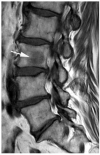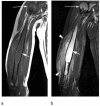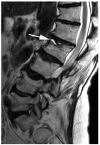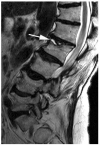Imaging of bone marrow pitfalls with emphasis on MRI
- PMID: 35522786
- PMCID: PMC9975530
- DOI: 10.1259/bjr.20220063
Imaging of bone marrow pitfalls with emphasis on MRI
Abstract
Normal marrow contains both hematopoietic/red and fatty/yellow marrow with a predictable pattern of conversion and skeletal distribution on MRI. Many variations in normal bone marrow signal and appearances are apparent and the reporting radiologist must differentiate these from other non-neoplastic, benign or neoplastic processes. The advent of chemical shift imaging has helped in characterising and differentiating more focal heterogeneous areas of red marrow from marrow infiltration. This review aims to cover the MRI appearances of normal marrow, its evolution with age, marrow reconversion, variations of normal marrow signal, causes of oedema-like marrow signal, and some common non-neoplastic entities, which may mimic marrow neoplasms.
Figures




















Similar articles
-
Pictorial review: challenges in distinguishing bilateral metaphyseal marrow abnormalities on magnetic resonance imaging.Pediatr Radiol. 2024 Jul;54(8):1247-1260. doi: 10.1007/s00247-024-05896-7. Epub 2024 Mar 16. Pediatr Radiol. 2024. PMID: 38491225 Review.
-
Bone marrow magnetic resonance imaging: physiologic and pathologic findings that radiologist should know.Radiol Med. 2021 Feb;126(2):264-276. doi: 10.1007/s11547-020-01239-2. Epub 2020 Jun 17. Radiol Med. 2021. PMID: 32557107 Review.
-
Normal Bone Marrow and Non-neoplastic Systemic Hematopoietic Disorders in the Adult.Semin Musculoskelet Radiol. 2023 Feb;27(1):30-44. doi: 10.1055/s-0043-1761495. Epub 2023 Mar 3. Semin Musculoskelet Radiol. 2023. PMID: 36868243
-
MR Imaging of Pediatric Bone Marrow.Radiographics. 2016 Oct;36(6):1911-1930. doi: 10.1148/rg.2016160056. Radiographics. 2016. PMID: 27726743 Review.
-
Pearls and Pitfalls of Imaging of the Developing Pediatric Skeleton: Differentiating Normal and Pathology With MRI.Semin Ultrasound CT MR. 2022 Feb;43(1):73-87. doi: 10.1053/j.sult.2021.05.008. Epub 2021 May 15. Semin Ultrasound CT MR. 2022. PMID: 35164912 Review.
Cited by
-
Pictorial review: challenges in distinguishing bilateral metaphyseal marrow abnormalities on magnetic resonance imaging.Pediatr Radiol. 2024 Jul;54(8):1247-1260. doi: 10.1007/s00247-024-05896-7. Epub 2024 Mar 16. Pediatr Radiol. 2024. PMID: 38491225 Review.
-
[MR Imaging Features of Pediatric Bone Marrow].J Korean Soc Radiol. 2024 May;85(3):505-519. doi: 10.3348/jksr.2024.0039. Epub 2024 May 29. J Korean Soc Radiol. 2024. PMID: 38873387 Free PMC article. Review. Korean.
-
In-phase and opposed-phase Dixon chemical shift imaging for the assessment of skeletal marrow lesions: comparison of measurements from longitudinal sequences to those from axial sequences.Br J Radiol. 2024 Mar 28;97(1156):828-833. doi: 10.1093/bjr/tqae031. Br J Radiol. 2024. PMID: 38321150 Free PMC article.
-
Multiparametric quantification of T1 and T2 relaxation time of bone metastasis in comparison with red or fatty bone marrow using magnetic resonance fingerprinting.Skeletal Radiol. 2024 Jun;53(6):1071-1080. doi: 10.1007/s00256-023-04521-2. Epub 2023 Dec 2. Skeletal Radiol. 2024. PMID: 38041749
-
Incidental imaging findings from head to toe: challenges and management: introductory editorial.Br J Radiol. 2023 Feb;96(1142):20239002. doi: 10.1259/bjr.20239002. Br J Radiol. 2023. PMID: 36692871 Free PMC article. No abstract available.
References
-
- Bracken J, Nandurkar D, Radhakrishnan K, Ditchfield M. Normal paediatric bone marrow: magnetic resonance imaging appearances from birth to 5 years: MRI appearance of normal marrow from 0-5 years. J Med Imaging Radiat Oncol 2013; 57: 283–91. - PubMed
Publication types
MeSH terms
LinkOut - more resources
Full Text Sources
Medical

